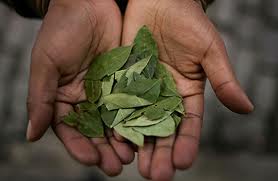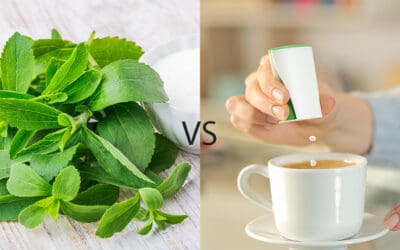Recently our family spent 10 months living in Bolivia, where the altitude of the cities we stayed in reached as high as 4,500m above sea level (approx 15,000 ft) and as you might guess, the oxygen does get a bit thin. For those who have no experience of high altitudes, it means that when you walk, go up stairs or do any form of physical exertion, there is not enough oxygen being passed into your body. The effects of altitude, otherwise known as Altitude sickness, can result in a variety of symptoms, including being lightheaded, headaches, excessive tiredness, vomiting and in extreme cases, it can be fatal.
When you ask a local how to treat altitude sickness, they would immediately say to you, “Mate de Coca” otherwise Coca Tea. Drinking Mate of Coca does work but my experience is that it takes a fair amount of tea in order to work effectively. From my point of view, the main reason was that I was drinking the commercial version, and like all other commercial teas in Bolivia it was quite weak in comparison to using actual leaves. The consequence of drinking all of this tea was my bladder could not take the combination of altitude and needing to find a toilet – not good at all. Luckily for me, my partner is a Homeopath and got us to take a Homoeopathic version of Coca called Alturan (the Bolivian version) and it worked a treat and that saved my bladder – phew!!!
One thing I love about my partner is that she loves to discover things, and on one shopping trip in Bolivia, she found Coca flour (locally known as Harina de Coca) which is used to make biscuits, lozenges and other treats. She started to have a spoon full every morning in a glass of water as a general tonic (cocoa is the panacea in this country), and she found it to be very effective. Antonietta encouraged me to do the same while in La Paz. Wow!! did my energy levels and ability to cope with the altitude change! I was able to walk, climb hills and get up the stairs at our hotel with greater ease and overall, I felt much better.
[singlepic id=4 w=180 h=241 float=right] Since then, we undertook a bit of informal research and have learned that coca leaf is a traditional remedy for treating stomach and digestive ailments, alleviating affections of the larynx and vocal cords, preventing vertigo, regulating arterial pressure and the metabolism of carbohydrates, and even of improving sexual prowess. In 1794, Hipolito Unanue writes of “coqueros, 80 years of age and over, and yet capable of such prowess as young men in the prime of life would be proud of.” Coqueros is the Spanish word for people who grow coca – we can only assume they use it too.
A very important study published by Harvard University in 1975 (Duke, J., D. Aulik and T. Plowman, Nutritional Value of Coca) found the coca leaf has a large number of nutrients and that each 100 grams of leaf coca contain Calcium 1749 (mg), Phosphor 637 (mg), Vitamin A 10000 (iu) which is enough to satisfy the nutritional needs of an adult for 24 hours.
According to research, the chemical composition of coca leaves is more complete and rich in calories, proteins, fats, carbohydrates, fibre, ash, minerals (calcium, phosphorous, iron, potassium, magnesium, sodium, ascorbic acid, etc.) and vitamins A, C and E than other food plants and infusions in common use such as coffee, tea, chamomile, etc. Thanks to this research, it is nowadays recognized that the coca leaf contains more proteins (19.9 per cent) than meat (19.4 per cent) and far more calcium (2,191 per cent) than condensed milk, and that it is richer in vitamin B-1 (276 per cent) than fresh carrots.
According to research, the chemical composition of coca leaves is more complete and rich in calories, proteins, fats, carbohydrates, fibre, ash, minerals (calcium, phosphorous, iron, potassium, magnesium, sodium, ascorbic acid, etc.) and vitamins A, C and E than other food plants and infusions in common use such as coffee, tea, chamomile, etc. Thanks to this research, it is nowadays recognized that the coca leaf contains more proteins (19.9 per cent) than meat (19.4 per cent) and far more calcium (2,191 per cent) than condensed milk and that it is richer in vitamin B-1 (276 per cent) than fresh carrots.
| COCA | NUTRIENTS | |
Calories Proteins Fats Carbohydrates Calcium (mg) Phosphor (mg) Iron (mg) Vitamin A (iu) Vitamin B1 (mg) Vitamin PP (mg) Vitamin C (mg) Vitamin B2 (mg) | 305 (mg) 19.9 3.3 44.3 1749 637 26.8 10000 0.58 3.7 1.4 1.73 | 279 (mg) 11.4 7.9 37.9 99 270 3.6 35 0.58 2.2 13.0 0.18 |
Nutritionist Maritza Vera worked with patients in a Peruvian hospital to cure themselves of diverse diseases like chronic anemia, depression, osteoporosis and leukemia. They achieved this by adding “flour of coca” (toasted and ground coca leaf) to their foods. The coca contains “reserpina” that regulates the pressure and forms osteoblasts which helps patients with osteoporosis, according to Maritza Vera.
The innocuous nature of the traditional use of coca leaves and the benefits for human health were proven with scientific rigour by the most extensive study of coca ever done. This research was carried out between 1991 and 1995 by the World Health Organisation (WHO). The concentration of cocaine alkaloid in the leaf is very low, and therefore, ingested in natural form, it does not produce serious toxicity nor it generates dependency.
On our return, we brought back a couple of bags of harina de coca and some coca tea for our own use and had no problems bringing it in through customs; however, I would suggest that you check with your local customs office first as the regulation varies between countries. We have used it as a tonic not only for ourselves but when the kids have been sick and we found that our energies were significantly boosted.
As part of our research, we also started to find products now available in other countries that are coca based, such as a herbal liqueur called “Agwa de Bolivia”, grown in Bolivia and de-cocainized in Amsterdam. Now Bolivia is starting to make their own coca leaf soft drink called Coca Colla, ironically the same ingredient that Coca-Cola started to use in their own drink. Since then, we found a whole range of products, including lozenges, some of which are suitable for kids and some strictly for adults; toothpaste; hair products; rubbing creams, pastries, etc, which is available over the internet.
Whilst in Bolivia, we were fortunate enough to spend time with the Coca Museum in La Paz curator and learned a little about the history of the coca plant and its use in traditional cultures. The coca history is as rich and varied as the properties of the plant and its uses. You can see the interview in our travel blog, as we broke it into several parts as it is an hour long.
There you have it – who would it thought that coca leaf, which has been associated with cocaine for so long, would have some may benefit to one’s health.
Enjoy,




